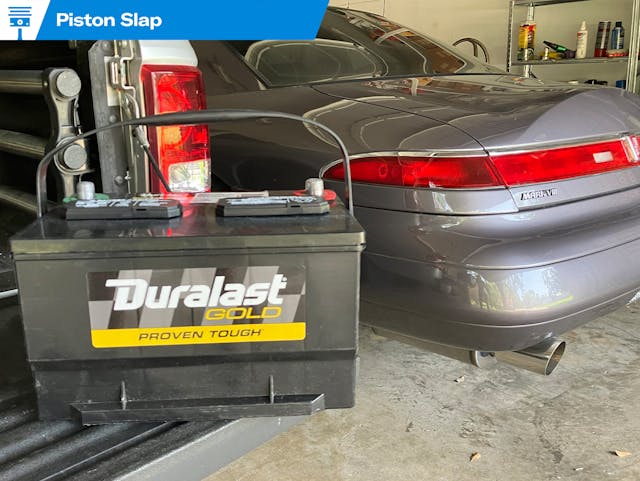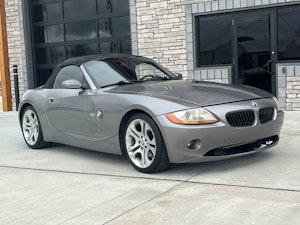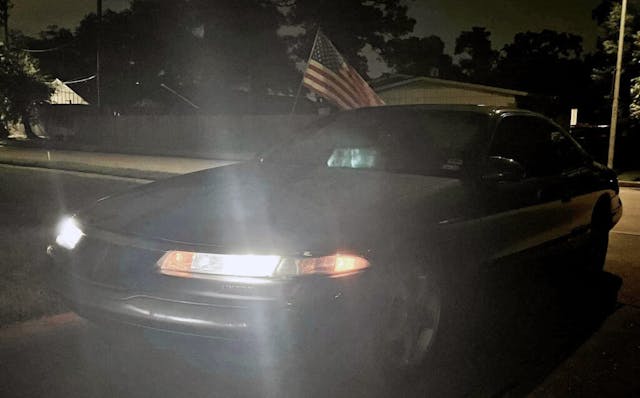Media | Articles
Piston Slap: Please test your battery this summer!

Sanjeev writes:
Look who finally let me appear in his precious Q&A column here on Hagerty! Sanjeev is here to keep your audience engaged, as they are autocorrecting asking for me by name on a regular basis, either via pistonslap@hagerty.com or in the comments. So let me offer a public service announcement because you’re too afraid to mention it: batteries and heat are a combination that can leave you stranded.
Last week, this Sajeev guy almost got stranded in 109 degree weather in Houston. Even though his battery fired up the car with ease, it died while driving on the highway. It was a slow, terrifying death, as accessories died in rapid fire succession to the point he could go no faster than 35 mph with a completely dead interior. Which is bad news, but likely preventable with just a simple test.
Sajeev is too chicken to admit his fallibility, but Sanjeev is here to give the people what they need. (And they need Sanjeev.)
Sajeev answers:
Marketplace
Buy and sell classics with confidence
As much as I hate that Sanjeev guy’s popularity, he’s 100 percent right. Many of us (approximately 100 million people) are currently living under a massive heat dome. Excessive heat is the enemy of 12-volt car batteries, and this level of sustained warmth can do them in with little or no warning. Which is why doing a load test is a good idea, and it’s more than just plugging in a cigarette lighter gauge in your dashboard and keeping a close eye on the voltage. You need a multimeter with a min/max feature, connect it to the battery, and turn over your engine.
Or just watch the video above, as it makes the process pretty clear. Many auto parts stores have a battery diagnostic tool that will accomplish the same thing, and they will go out to the parking lot to test your battery for free. Which is a great price, but do this around dusk or dawn, as it’s dangerously hot outside for everyone under the heat dome.
If the car starts but fails the 9.6-volt threshold test, you know the battery is running on borrowed time. And the hourglass is emptying quickly when under a heat dome. Even worse, in my experience with battery testing machines, just because a battery passes doesn’t guarantee it will survive commuting for weeks upon weeks in the summer months. The test is more of a good indicator, and not a perfect science: especially when factoring in a battery’s age and internal condition.
The battery in the vehicle in question, a 1995 Lincoln Mark VIII LSC, was 3.5 years old. It lived most of its life either being driven or resting on a tender, but it still died at a pretty bad time. At least I had a working alternator to get me home, but doing so can be kinda awful for electrical systems. So consider driving with a dead battery only long enough to park somewhere safe, and get a ride to a parts store/Walmart/dealership to get a new one. (Keep in mind that once a car with a dead battery is turned off, it won’t start again without a fresh battery.)
Let me say that again: a car with a battery that dies on the road can still get you someplace safe. This fact is likely to get lost when you are in the thick of it, driving in this sweltering heat, watching accessories die off like a falling house of cards. That’s what happened to me, so let’s recap the failures as they unfolded over the course of 3-5 minutes, just for fun (as it were).
- The stereo slowly lost volume (probably due to how the aftermarket amplifier is wired into the system).
- The HVAC blower motor was stuck on the low fan speed, which was my first indication of trouble.
- The Mark VIII’s message center beeped and boldly proclaimed, “CHECK CHARGING SYSTEM.” (I turned off the stereo immediately.)
- The charging/amp light was not illuminated and never came on. (Thanks, alternator!)
- The HVAC control panel rebooted every five seconds (I cracked the windows open at this point).
- The message center beeped again and told me to check my charging system, again.
- The message center beeped and told me to check my air suspension. (Truly a high priority at this point!)
- HVAC control panel went completely dead.
- The anti-lock brake warning light illuminated.
- The message center died, which was kinda nice at this point.
- The windows wouldn’t roll down any further. (I left the freeway; I needed more circulation badly.)
- The clock died, even though it’s in the same display as the message center.
- Engine idle became rough on deceleration and at stop lights.
- The Mark VIII was sputtering and couldn’t maintain speeds higher than 30 mph.
Thank goodness I got home before the next electrical malady hit the car, or before the alternator had enough of this nonsense and left the chat. I parked, opened the garage, got a multimeter, and found the charging system operating at decidedly unhealthy 7.4 volts. (Keep in mind a running car should be closer to double that figure.) I disconnected the battery and did a quick test with the multimeter again: it was 7.4 volts (I think) so clearly failed the resting voltage test, too. (Resting voltage is around 12.6 volts.)
With that data in mind, I turned off the Mark VIII, yanked the battery and got me a new one.
Well, once it cooled down a bit. It’s a downright chilly 91 degrees in Houston at night! But now I have a happy Mark VIII with a healthy charging system, which is great. And I hope this provides enough motivation to get your battery tested, because you want none of this happening if you’re also living under the heat dome.
Have a question you’d like answered on Piston Slap? Send your queries to pistonslap@hagerty.com—give us as much detail as possible so we can help! Keep in mind this is a weekly column, so if you need an expedited answer, please tell me in your email.
***
Check out the Hagerty Media homepage so you don’t miss a single story, or better yet, bookmark it. To get our best stories delivered right to your inbox, subscribe to our newsletters.













That Sanjeev guy sure is popular – been seeing his name in posts since I started on this forum. However, I’m not sure he gives out very good advice. I suggest that readers follow the author’s (Sajeev) suggestions rather than Sanjeev’s.
A battery health check is good advice whether under a heat dome or not for sure. Sajeev gives a good example of how one might be able to limp home (or at least to a safe spot) on alternator juice alone, but there is a worse-case scenario, which I have experienced: car runs okay and you park it, but the battery is too low on power to provide cranking amps to spark the starter, stranding you in maybe not-such-a-safe-spot. Add to the mix the lack of a mobile phone (yes, youngsters, there was such a time) and one could be facing a long walk – in the extreme heat…
I’m not gonna say “ask me how I know”, because I’m pretty sure you can figure that one out on your own! 🤨
Yes, 100% yes. About everything, but especially the “it won’t start back up” comment, because that’s exactly what will happen. Perhaps I sound edit the article to make that clear: when a battery fails and you’re running on the alternator, it will not start back up after you turn it off.
I flew my sons car in after a dead battery.
Lost TCC, Air Bags, Dash, Radio, Speedo and locked into third gear.
I replaced the old battery due to the dash light not coming on. But it was the Alternator. So do not always blame the battery
Yes, that’s very true. I should also mention that I tested the battery with a multimeter after disconnecting it and before I yanked it out of the car…I think it was still at 7.4 volts. Whatever the number was, it was well below 10 volts.
I saw battery tender in that article… I don’t use them and never will. Everyone I know that uses them ends up with short battery life and odd battery failures. I don’t care how good it is, there is something about charging a battery 24/7 that is not good for long term battery health. My method of tending batteries is driving the cars. My collector rule has always been if I walk up on a car with a dead battery, I have too many. I would estimate the youngest battery in my fleet at 4 years old and the oldest at i-have-no-idea
Battery tenders don’t actually charge 24/7 – they “cycle” the battery through charge/discharge similar to driving. Trickle chargers, on the other hand, do continuously charge as long as they’re hooked up. Two different things.
Yes, tenders and chargers are different things. From what I have seen with tenders (mostly NOCO branded), they do their job and extend battery life for vehicles that are rarely driven.
I’ve had really good luck with the cheap harbor freight battery tenders. I think they’re $15-$20. A riding lawnmower battery lasted 7 years using a tender, when before I was only getting about 2 years out of them. Same thing with my tractor, a tender has kept its 2 batteries going for almost 10 years now.
That’s good to hear! It seems like the hardware/software needed to make a decent tender isn’t very hard to make these days, good to hear the HF unit has been good to you!
I have both “toys” and ranch vehicles/equipment that are used seasonally. So at one time of year, engines are being run and charging batteries while others are not – and then visa versa as the season changes. I keep three tenders (all different brands) busy, moving them around to different batteries as the usage declines per the season (e.g. – the boat battery is getting plenty of use right now, but will not be needed when the snow flies, so it’ll rotate onto the battery tender use).
I’ve got batteries that are well past 6 years old that are still performing like champs.
My advice for a “battery tender” is a standard automatic 6 amp battery charger and a timer. Run the charger for an hour or 2 every 4 or 5 days – like charger on at 10PM Monday and Thursday and off at midnight – or on every Friday night at 10 and off Sat morning at 3AM. Much better for the battery.
Back in the 70’s my 67 Cougar would constantly need new alternators (cheap $20 alternators I learned are not so great). Once on a 45 minute trip home at night I could see the lights dimming but still wanted to get home (I was on a date). I turned off all accessories and kept going. Then I turned off the headlights and went to running lights. When that got bad I went to flashers which only used the center brake lights (cougars had six bulbs back there). Still on the expressway, if I hit the horn the car would lose ignition, so I was right on the edge. Made it home, but I wouldn’t recommend doing that, like many other things that I did in that car (which I bought back recently).
I didn’t know the sequential tails only lit up the center lights when activating the hazards! That’s super cool, and even cooler that you shared this entertaining and relevant story with us. Thank you!
Seriously, you only got 3 1/2 years out of the battery. What kind of junk are you buying? Heres a maintainance tip, buy the best battery you can get your hands on. It will pay dividends in reliability and peace of mind. I just replaced a 12 year old AGM from Exide. Cheap insurance.
Doesn’t seem to matter with this car, be it Optima, Motorcraft or Duralast, they all last about 4 years.
My mantra is never buy the cheapest or most expensive of anything because either way you end up overpaying. And don’t buy “the one with the best warrantee” either I’d rather have a good battery with a 6 month warantee than a piece of junk with a lifetime warrantee that I end up changing every 8 months to 15 months (here’s looking at yopu, Canadian Tire Lifetime battery that let me down on the Ambassador Bridge)
I normally get about 7 years out of my batteries and have switched to East Penn AGM batteries this last time round
You got really lucky. Some electronic ignitions will not fire if the battery voltage is less than about 9.5 VDC. This means you cannot bump-start out of such a situation, or let the revs drop too far if its still running, ’cause your alternator doesn’t put out enough current at low revs. It also won’t restart if you shut it down for any reason.
I think what you’re suggesting woulda happened to me if I had to drive any further. The idle and performance when running was getting worse, and more throttle input wasn’t helping. But that issue only creeped up in the last half mile, so I got really, reeeeeally lucky.
I’ve had the battery be perfect, went to a Walgreens and then got back in and the car did not start. Waited a few minutes and it started hard. Went straight to the dealer to get that puppy fixed. That was on vacation last year. It was 50-60’s and slightly rainy that day.
Another reason for me not to sell the 30 year old (manual trans) Acura that I drive daily…
Bought one of those Palumma (sp?) combination USB outlet/digital voltmeter things off Amazon that plug into the cigarette lighter. Since the cigarette lighter is only powered in that car while the ignition is on, it stays plugged in permanently. But it’s a great indicator, while driving, that the charging/electrical system is behaving as it should. Helped me diagnose an intermittent alternator (suspected) issue last year.
I have had great luck with battery tenders, providing you charge them with a higher amp charger occasionally, or drive the car or boat occasionally. This will take off some of the sulfates that build up on the plates allowing the battery to accept a better charge. Most of my batteries last 8 to 10yrs.
Here are two other things.
Parasitic loss. Being a Corvette owner that is a popular topic along with grounds. Many of todays cars suffer crazy power drains that are not always easy to find.
The other issue is the new batteries today like the AGM or Optima. Many people think they have a bad battery but often they let these new tech batteries get too low and they will not charge with conventional chargers.
Also todays batteries are no longer as good as they once were. I used to get 12 years or more from Delco Freedom Batteries. One got 18 years not even on a tender.
Today many will not go 5 years.
I have an Optima now on 12 years and still going.
I purchased a battery tester a few years ago for around $60. I own several vehicles and a couple boats. I also live 20 minutes away from the nearest parts store where I can get a battery tested. The boat batteries get pulled for winter and put in heated part of my garage with battery maintainer’s placed on them. Also my summer vehicle gets same treatment. Before re-installing them they get tested. If a vehicle won’t start I have my handy tester to rule out the battery as the culprit. Way much easier than pulling the battery and lugging it to town to get it tested . The tester is one those tools I should have bought years sooner . Also in article author mentions all the weird stuff that happens when you’re driving and the battery is dying. I have a Chevy Cruze and a few years ago several different warning lights were coming on . Did some sleuth work on the internet. There was a recall on the battery ground cable The cable end from the factory was not crimped correctly.Dealership changed the cable and all good . Just had to argue with dealer because they did a diagnostic test on all the warning light’s which I never requested them to do. Wanted to charge me $134. After a 5-10 minute pow wow they gave in and I left with my new free cable , no warning lights on and satisfaction that rip off dealer didn’t empty my wallet